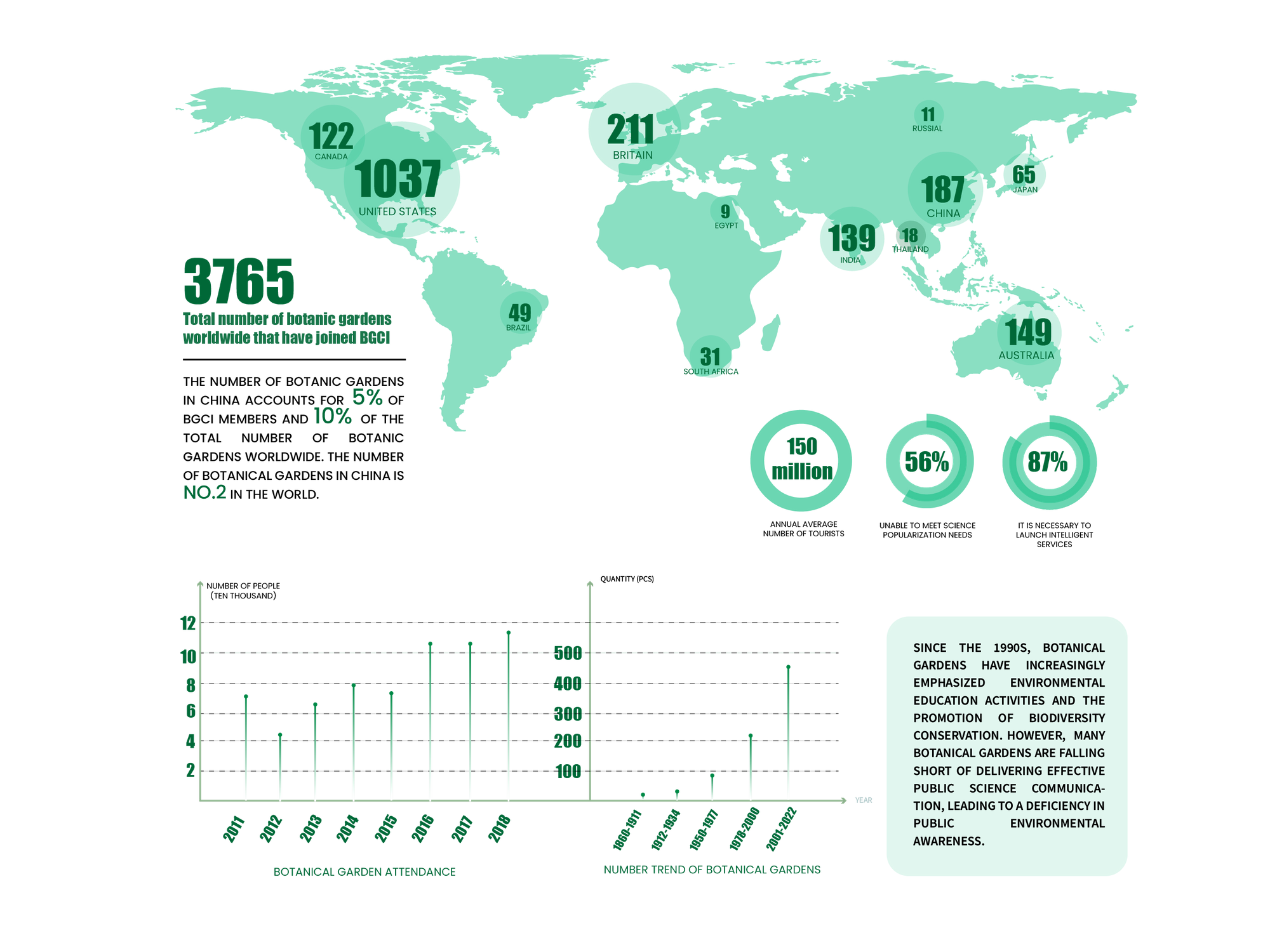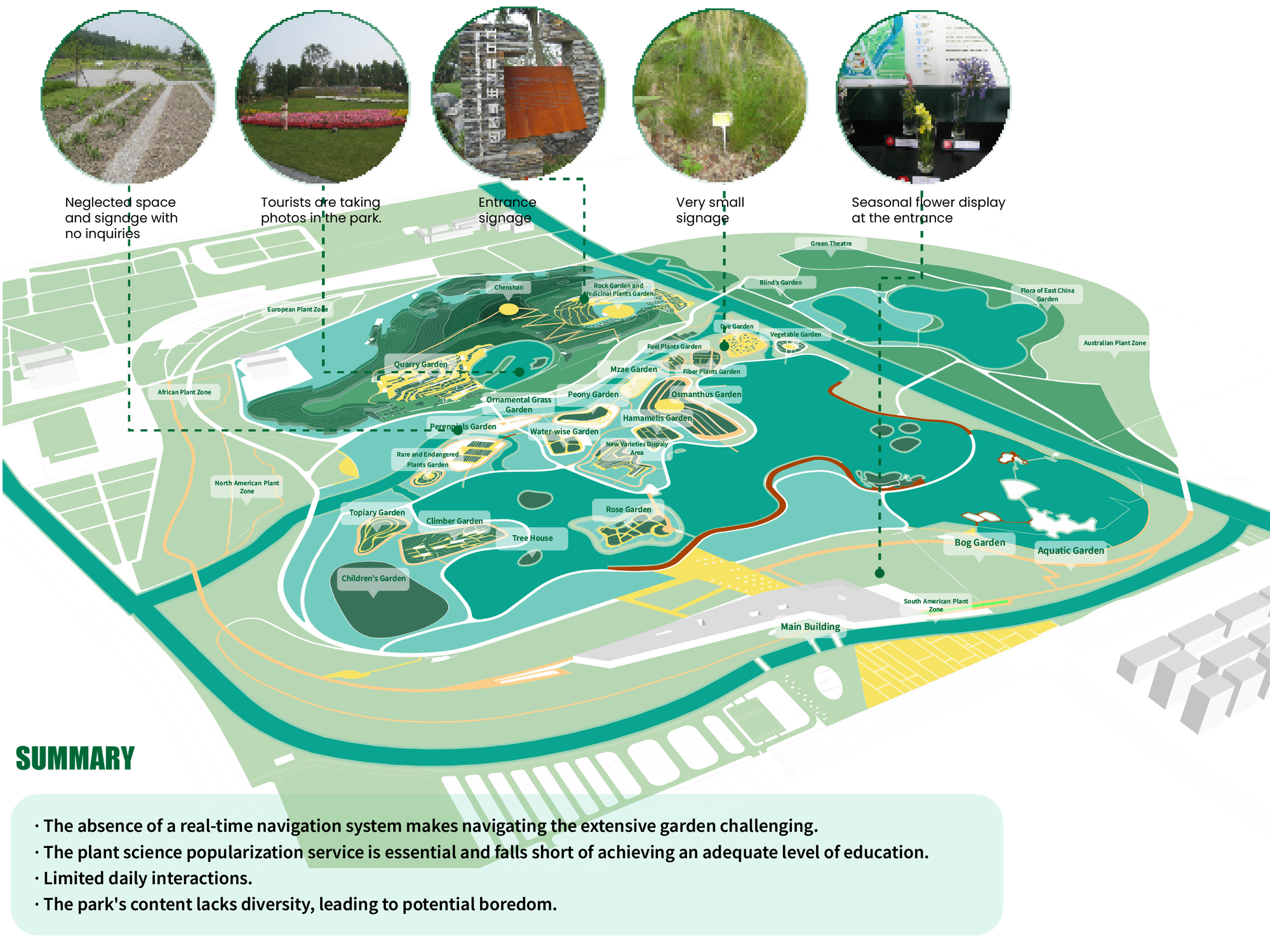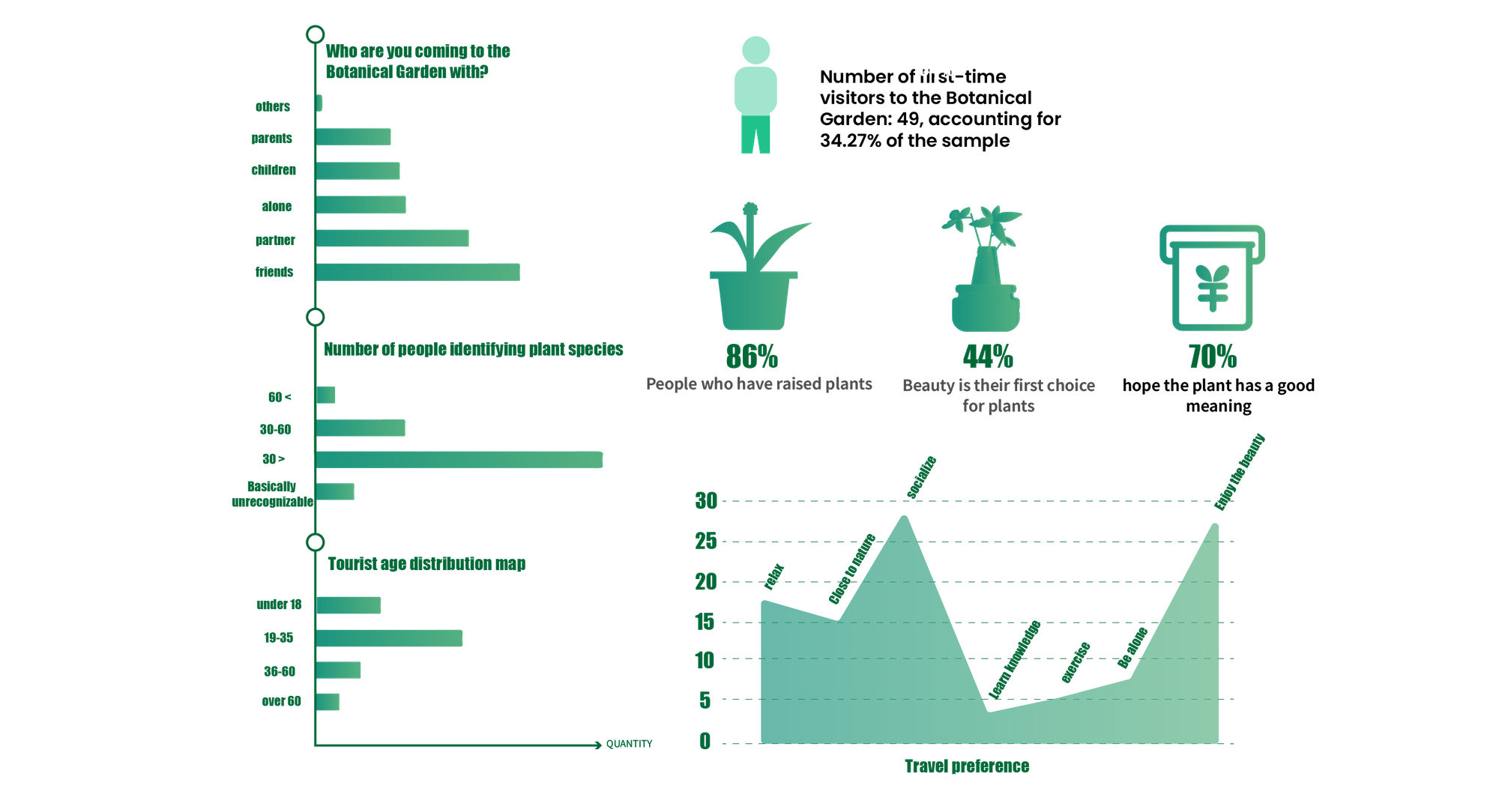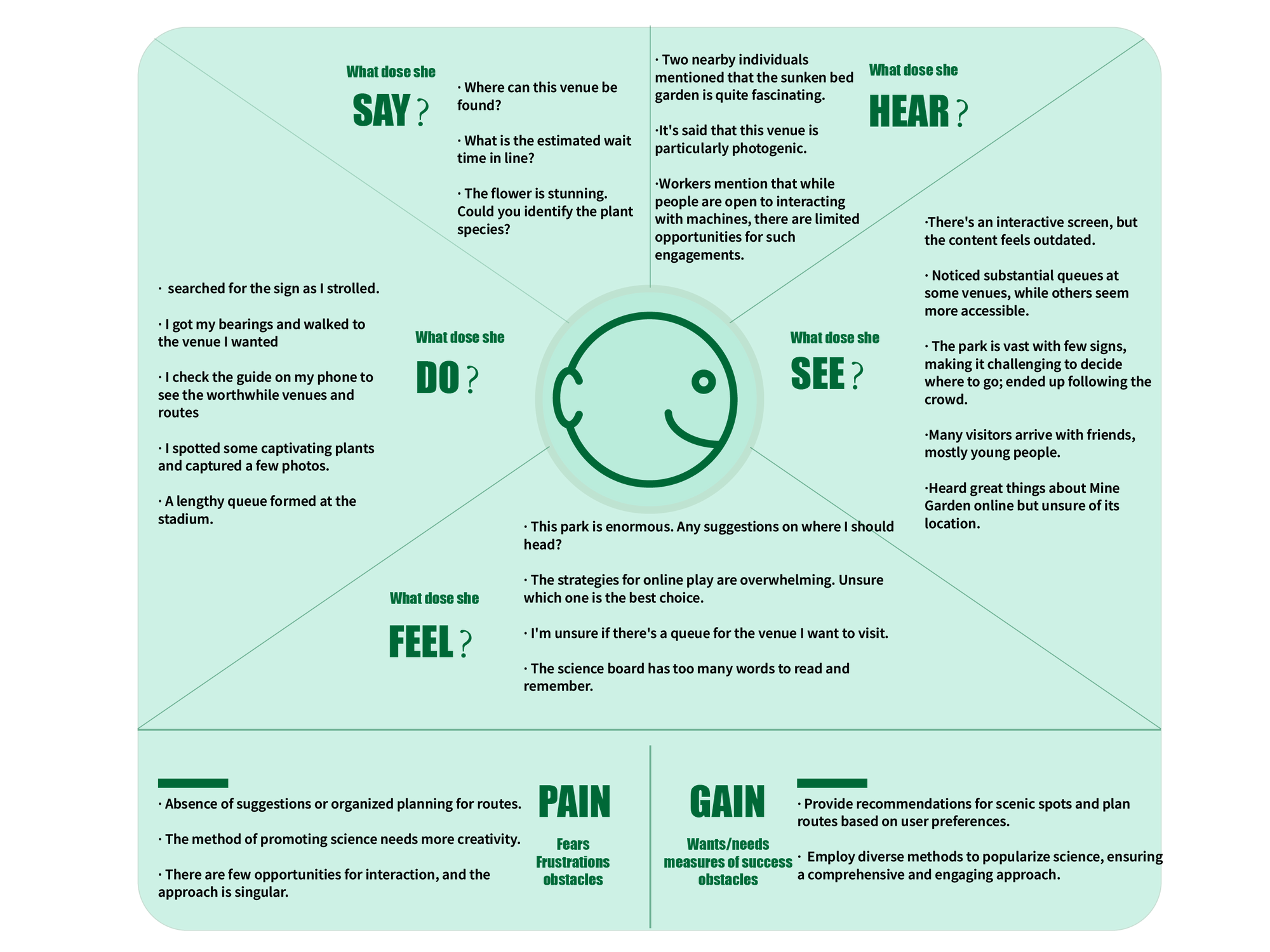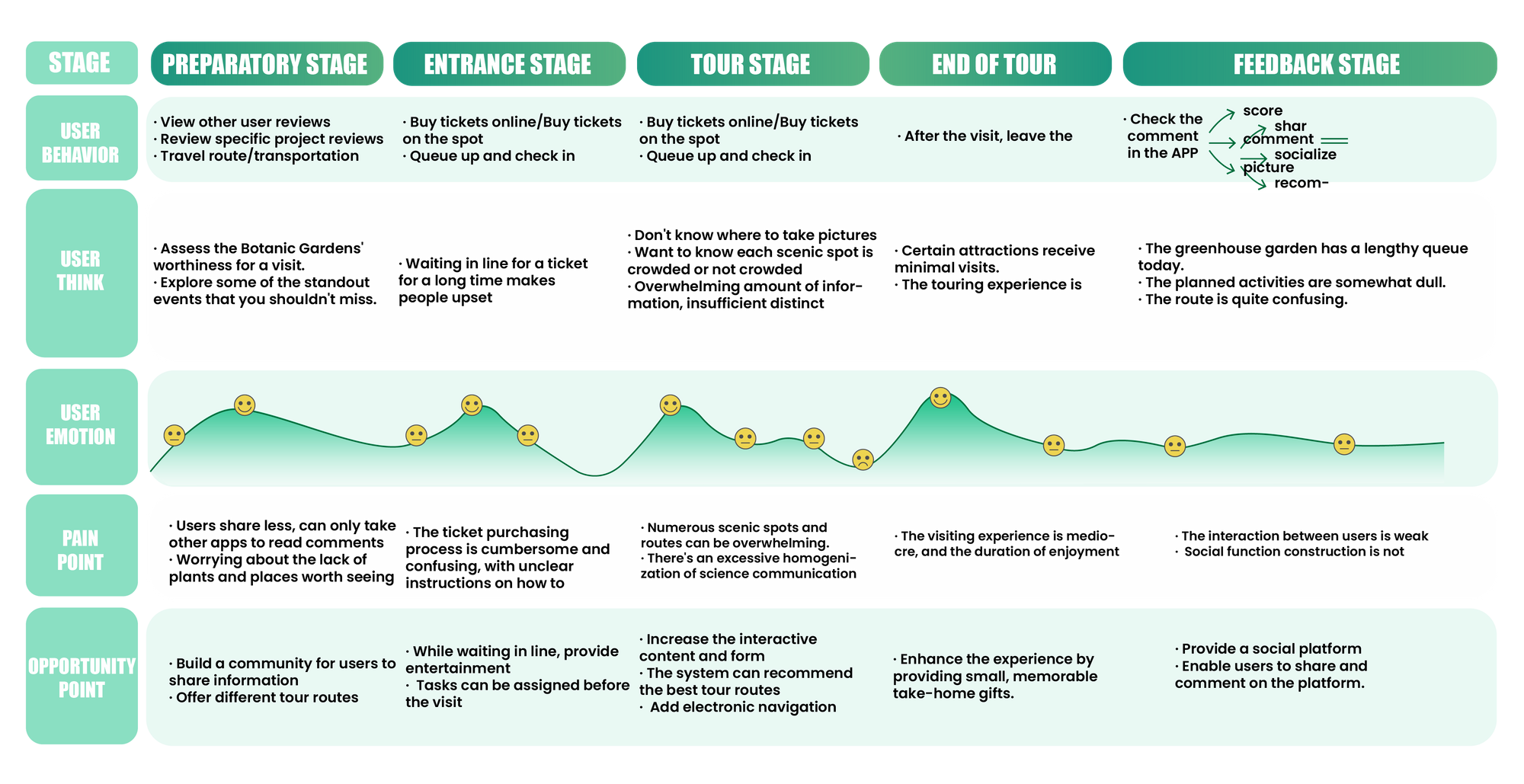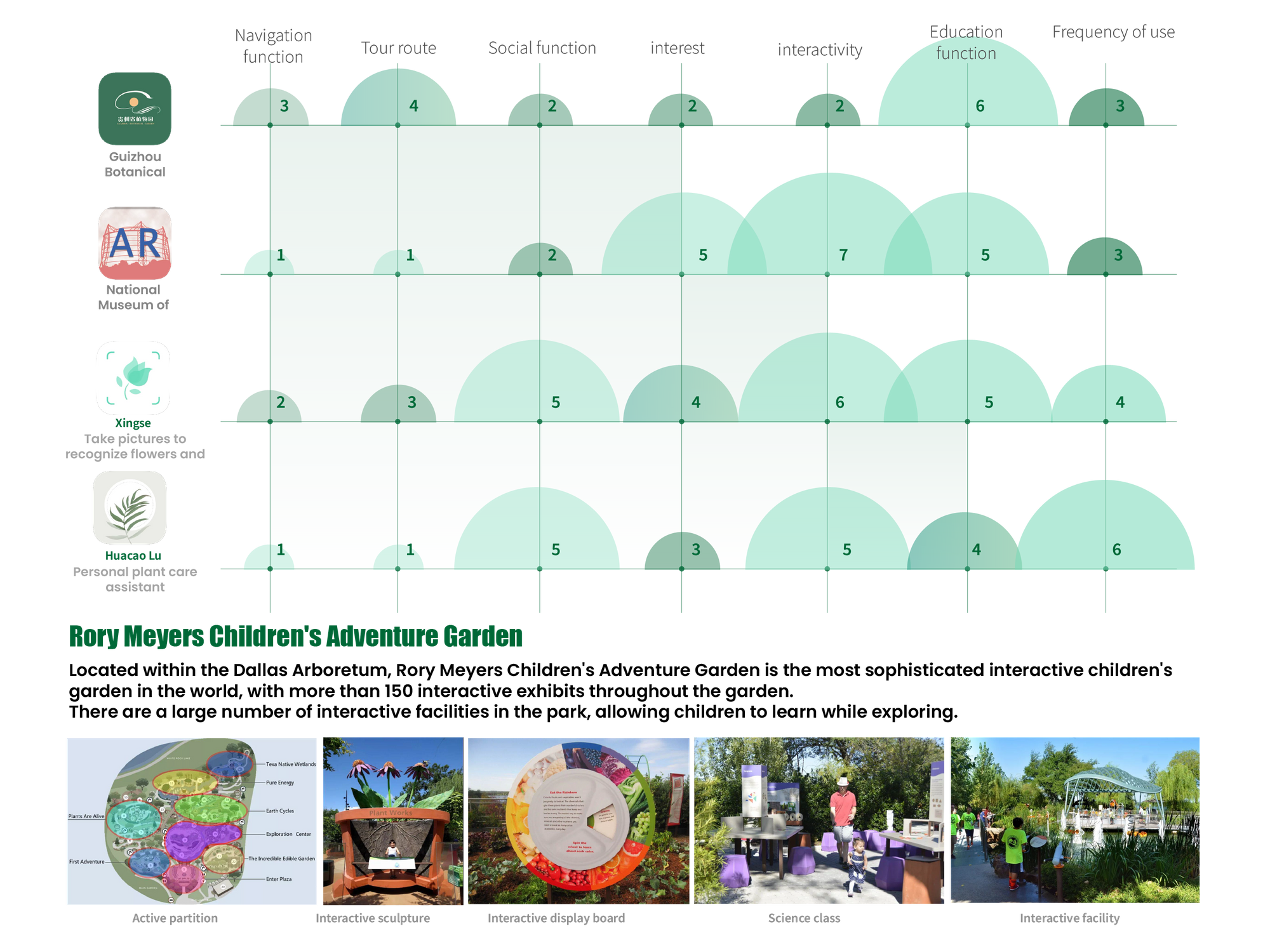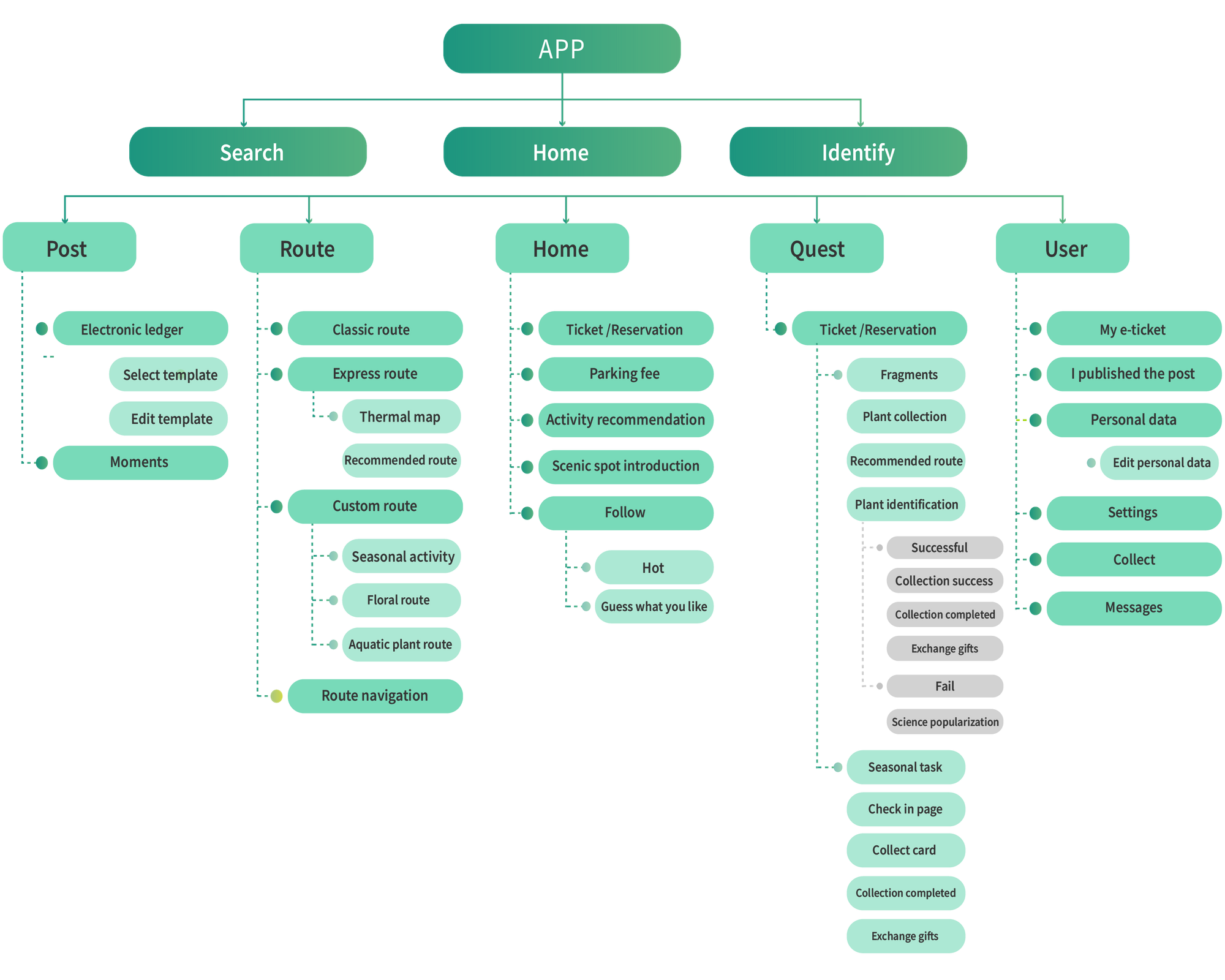Prototype
Followed park event update
Users following specific events within the botanical garden can receive personalized notifications about upcoming activities, ensuring visitors stay well-informed about events aligned with their preferences. The app utilizes user preferences and behavior to offer tailored event recommendations. Through an analysis of past event attendance and user interactions, the app suggests similar events likely to captivate the user's interest. This personalized approach empowers users to plan their visits more effectively by creating customized itineraries based on the events they have chosen to follow.
Route suggestion
Route suggestions serve as valuable tools, aiding visitors in optimizing their exploration of the botanical garden by offering a recommended sequence of attractions and points of interest. Visitors have the flexibility to explore the garden through various route options, including classic, express, or customized routes. Customized route suggestions cater to themed exploration, guiding visitors through distinct sections such as a tropical rainforest, succulent garden, or historical garden, thereby enhancing the overall thematic experience.
For those seeking picturesque spots for photography, route suggestions can include recommendations for scenic viewpoints, Instagram-worthy locations, or areas with unique plant displays that are particularly photogenic. This tailored guidance provides opportunities to capture memorable moments in the garden.
Plant identification
The app can function as a digital herbarium, allowing users to collect and document the plants they encounter virtually. Users can engage in interactive exploration by using the app to identify plants during their visit. This hands-on approach adds an element of discovery and curiosity to the botanical garden experience.Plant identification in the app serves as an educational resource, offering detailed information about individual plant species. Users can learn about each plant's botanical characteristics, origin, uses, and significance.
Plant journal
The plant journal introduces a personalized dimension to the visitor experience, enabling users to craft a record of their favorite plants, noteworthy discoveries, and memorable moments within the botanical garden. Users can use the plant journal as a companion for capturing and organizing photographs of plants. This feature enhances the photography experience by providing a context for each image and facilitating easy identification. Furthermore, the app enables users to share their plant journal entries with friends or the wider community. This social sharing feature fosters interaction, allowing users to exchange insights, recommendations, and experiences related to their plant discoveries, creating a communal platform for shared botanical enthusiasm.
Seasonal task
The app efficiently notifies users about upcoming seasonal tasks, events, or activities, ensuring they stay informed and engaged throughout the year.
The seasonal tasks promote specific highlights or events unique to each season, including blooms, flowering cycles, migratory patterns of birds, or other seasonal phenomena that attract visitors. The app gamifies the user experience by turning seasonal tasks into interactive challenges or quests, adding fun and competition, and encouraging users to explore, learn, and complete tasks for rewards or recognition.Seasonal tasks encourage hands-on learning and interaction. Visitors can actively participate in tasks related to plant care, seasonal observations, or themed events, fostering a deeper understanding of the botanical garden's offerings.



